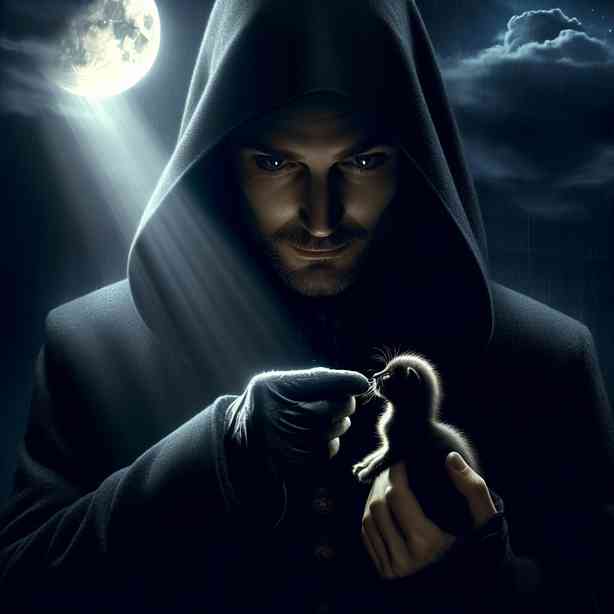
Villains are an integral part of storytelling, often embodying the darker aspects of humanity and serving as foils for heroes. However, what makes a villain truly captivating is not just their malevolence, but their multifaceted nature, which often includes moments of humanity. These moments can render them relatable, complex, and sometimes even sympathetic. By exploring “the Villain’s Moment of Humanity,” we can gain a deeper understanding of their character, motivations, and the significant role they play within their narratives.
At the heart of every compelling villain lies a backstory—a history that shapes their decisions and their worldview. It is essential to acknowledge that, just like every person, villains have experiences and emotions that contribute to their current actions. A moment of humanity can serve as a glimpse into their past, showing viewers or readers that they were not always the embodiment of evil. This insight can evoke empathy, allowing the audience to resonate with their internal struggles, perhaps even sympathizing with their plight.
Consider a character like Magneto from the X-Men series. His journey is deeply rooted in the trauma of his childhood during the Holocaust. This historical context provides a foundation for his motivations and his sometimes extreme actions. While he often stands against the heroes, moments where he reflects on his past or expresses concern for his fellow mutants highlight his humanity. These instances not only enrich the character’s depth but also invite the audience to understand the fear and pain that drive his antagonism.
In many stories, the villain’s moment of humanity serves as a turning point, a moment of hesitation that sheds light on their internal conflict. It is here that they may grapple with a choice between what they have become and what they could have been. Such moments are crucial, as they humanize the villain, allowing for personal growth or, conversely, a deeper descent into darkness. For example, in the movie “The Dark Knight,” the character of Harvey Dent initially epitomizes hope and justice. However, after a traumatic experience, his transformation into Two-Face is marked by moments where he reflects on his former self, grappling with feelings of betrayal and loss. These reflections add layers to his character, illustrating that his villainy is not solely born out of malice, but rather out of profound despair.
Another pivotal aspect of the villain’s humanity is the relationships they foster with others. Many villains display moments of vulnerability when interacting with individuals they care about. These relationships can serve as a foil, accentuating their darker tendencies while also highlighting their capacity for love, affection, or loyalty. For instance, in Disney’s “Maleficent,” the titular character’s transformation from villain to a more nuanced figure arises from her love for the young Princess Aurora. The complexity of her feelings complicates her role as an antagonist, making viewers question the traditional binaries of good and evil.
Moreover, villains often find themselves at the crossroads of redemption. Their moments of humanity can act as a catalyst for change, allowing them to reconsider their life choices or the paths they’ve taken. This potential for redemption can serve as both a narrative device and a moral exploration. Characters like Loki from the Marvel Cinematic Universe exhibit a constant struggle between villainy and heroism. His moments of reflection and vulnerability reveal his desire for acceptance and love, complicating the audience’s perceptions of his character. These transformations challenge the assumption that villains are irredeemable, promoting a more nuanced understanding of morality.
In addition to individual character arcs, the villain’s moment of humanity often resonates thematically within the overall narrative. It serves to reinforce the story’s moral complexities, prompting viewers or readers to reflect on the nature of humanity itself. This can lead to discussions about moral ambiguity, the circumstances that lead to villainy, and ultimately the question of whether anyone is truly inherently evil. In works like “Breaking Bad,” Walter White’s descent into villainy is interspersed with moments that force the audience to confront the fine line between heroism and villainy, raising questions about choice, consequence, and the capacity for change.
Moreover, a villain’s moment of humanity can also critique societal norms and present themes related to injustice, discrimination, and the human condition. Villains can emerge as products of their environments, shaped by societal failures, systemic oppression, or personal vendettas. For example, in the film “Joker,” the character Arthur Fleck embodies the struggles faced by those with mental illness and the societal neglect that often accompanies it. His moment of humanity lies in his yearning for connection and understanding in a world that consistently rebuffs him. This portrayal challenges the audience to reflect on the broader social contexts that can lead individuals down darker paths.
In conclusion, the villain’s moment of humanity serves as a powerful narrative device that enriches character development and enhances thematic depth. These moments reveal the complex interplay between good and evil, allowing for a more intricate exploration of what it means to be human. By recognizing the multifaceted nature of villains, we not only deepen our understanding of their motivations and actions but also engage with the moral ambiguities that permeate the fabric of storytelling. The exploration of a villain’s humanity ultimately invites audiences to question their perceptions of morality, empathy, and redemption. Through these lens, we can better appreciate the intricate narratives that shape our understanding of characters and the world around us. Understanding the villain’s journey allows us to find threads of humanity in the most unexpected places, creating a richer narrative tapestry that resonates on both emotional and intellectual levels.


